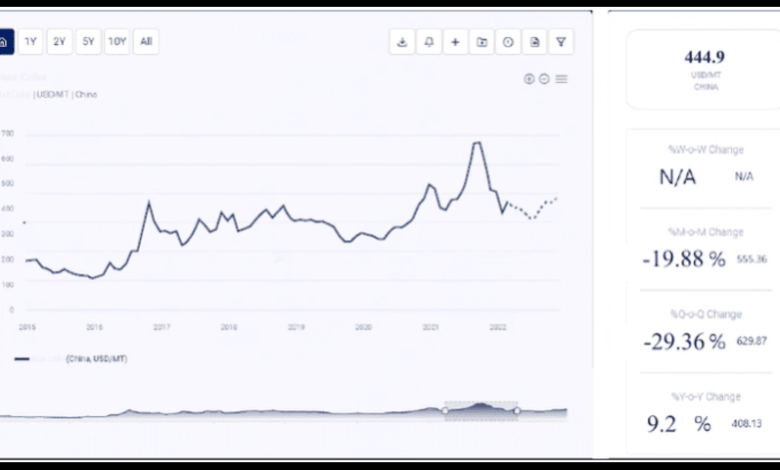Price Trend of Nuclear Energy:Challenges, and Future Prospects
The Evolving Landscape of Nuclear Energy: Trends, Challenges, and Future Prospects

Nuclear energy has been a cornerstone of global power generation for decades, offering a high-capacity, low-carbon energy source that enhances energy security and helps mitigate climate change. Despite its significance, the nuclear energy sector faces a complex set of challenges and opportunities, shaped by technological advancements, regulatory frameworks, public perception, and market dynamics. This article explores the current price trend of nuclear energy, examines the key challenges it faces, and discusses the future prospects of this vital energy source.
Historical Context
The development of nuclear energy began in the mid-20th century, driven by the need for energy security and technological innovation. The first commercial nuclear power plants were constructed in the 1950s and 1960s, and the industry expanded rapidly over the following decades. By the 1970s and 1980s, nuclear energy had become a significant part of the energy mix in many countries, particularly in the United States, Europe, and Japan.
Enquire For Regular Prices: https://www.procurementresource.com/resource-center/nuclear-energy-price-trends/pricerequest
The Rise and Stagnation of Nuclear Energy
The initial growth of nuclear energy was fueled by the desire to reduce dependence on fossil fuels, the need for a reliable and scalable energy source, and advancements in nuclear technology. However, the industry faced significant challenges in the latter part of the 20th century, including high capital costs, safety concerns following accidents such as Three Mile Island and Chernobyl, and growing public opposition. These factors led to a period of stagnation in nuclear energy development, with few new plants being built and some countries opting to phase out their existing nuclear facilities.
Current Trends in Nuclear Energy
Despite the challenges, nuclear energy remains a critical component of the global energy landscape. Several key trends are shaping the industry today, reflecting both advancements in technology and shifts in policy and public perception.
Technological Advancements
- Advanced Reactor Designs: One of the most significant trends in nuclear energy is the development of advanced reactor designs. These include small modular reactors (SMRs), which offer greater flexibility, lower capital costs, and enhanced safety features compared to traditional large-scale reactors. Other innovative designs, such as molten salt reactors and fast breeder reactors, promise to improve fuel efficiency and reduce nuclear waste.
- Fusion Energy: While still in the experimental stage, nuclear fusion represents a potential game-changer for the energy sector. Fusion reactors aim to replicate the processes occurring in the sun, offering a virtually limitless and clean energy source. Projects like the International Thermonuclear Experimental Reactor (ITER) in France are making significant progress, though commercial fusion energy remains a long-term prospect.
- Digitalization and AI: The integration of digital technologies and artificial intelligence (AI) is transforming nuclear power plant operations. Advanced monitoring systems, predictive maintenance, and AI-driven analytics are enhancing the efficiency, safety, and reliability of nuclear facilities.
Policy and Regulatory Developments
- Climate Change Mitigation: As the world grapples with the urgent need to reduce greenhouse gas emissions, nuclear energy is being recognized for its low-carbon benefits. Several countries are incorporating nuclear energy into their climate action plans, viewing it as a crucial tool for achieving carbon reduction targets.
- Nuclear Safety and Regulation: Ensuring the safety of nuclear power plants remains a top priority. Regulatory frameworks are evolving to incorporate lessons learned from past incidents and to accommodate new technologies. International cooperation and standards set by organizations such as the International Atomic Energy Agency (IAEA) play a vital role in maintaining high safety standards.
- Decommissioning and Waste Management: The safe decommissioning of aging nuclear plants and the management of nuclear waste are critical issues. Advances in decommissioning techniques and the development of long-term waste disposal solutions, such as deep geological repositories, are addressing these challenges.
Market Dynamics and Investment
- Private Sector Involvement: The nuclear energy sector is seeing increased involvement from the private sector. Companies are investing in the development of advanced reactors and other nuclear technologies, driven by the potential for long-term returns and the growing emphasis on clean energy.
- Public-Private Partnerships: Governments are fostering public-private partnerships to support nuclear innovation and infrastructure development. These collaborations aim to leverage the strengths of both sectors to advance nuclear technology and expand its role in the energy mix.
- Financing Models: New financing models are being explored to address the high upfront costs of nuclear projects. These include risk-sharing mechanisms, government-backed loans, and innovative financial instruments designed to attract private investment.
Key Challenges Facing Nuclear Energy
While nuclear energy offers numerous benefits, it also faces significant challenges that must be addressed to ensure its future viability and acceptance.
Safety Concerns
- Accident Risks: High-profile nuclear accidents, such as Chernobyl and Fukushima, have left a lasting impact on public perception and regulatory approaches. Ensuring the safety of nuclear power plants and minimizing the risk of accidents are paramount.
- Security and Proliferation: The potential for nuclear materials to be used in weapons or by non-state actors poses a significant security risk. Robust security measures and international non-proliferation agreements are essential to prevent the misuse of nuclear technology.
Economic Factors
- High Capital Costs: Building nuclear power plants requires substantial upfront investment, which can be a barrier to new projects. Addressing the financial challenges through innovative financing models and cost-reduction strategies is crucial.
- Operational Costs: While nuclear plants have low operating costs once built, ongoing maintenance, safety upgrades, and waste management can be expensive. Ensuring cost-effective operations is vital for the economic sustainability of nuclear energy.
Public Perception and Acceptance
- Public Opposition: Public opposition to nuclear energy remains strong in some regions, driven by safety concerns, environmental impacts, and historical incidents. Building public trust through transparent communication, community engagement, and education is essential.
- NIMBY Syndrome: The “Not In My Back Yard” (NIMBY) phenomenon can impede the development of new nuclear facilities and waste disposal sites. Addressing local concerns and ensuring equitable siting processes are important for gaining public support.
Environmental and Waste Management Issues
- Nuclear Waste: The long-term management of nuclear waste remains a significant challenge. Developing safe, secure, and sustainable waste disposal solutions is critical for the industry’s future.
- Environmental Impact: While nuclear energy has a lower carbon footprint than fossil fuels, it still poses environmental risks. Managing the environmental impacts of mining, plant operations, and waste disposal is essential for sustainable development.
Future Prospects of Nuclear Energy
Despite the challenges, the future of nuclear energy looks promising, with several factors contributing to its potential resurgence.
Climate Change and Energy Transition
- Decarbonization Goals: As countries commit to reducing carbon emissions, nuclear energy is being recognized as a key component of a diversified clean energy portfolio. Its ability to provide reliable, low-carbon baseload power makes it an attractive option for achieving climate goals.
- Integration with Renewables: Nuclear energy can complement renewable energy sources, such as wind and solar, by providing consistent power when renewable generation is variable. Hybrid energy systems and integrated grids can enhance overall energy reliability and efficiency.
Technological Innovations
- Advanced Reactors: The development and deployment of advanced reactors, including SMRs and next-generation designs, offer the potential for safer, more efficient, and cost-effective nuclear power. These technologies can address some of the traditional challenges associated with nuclear energy.
- Fusion Energy: While still in the experimental phase, nuclear fusion holds the promise of a nearly limitless, clean energy source. Continued research and development in fusion technology could revolutionize the energy landscape in the long term.
Policy and Market Support
- Government Initiatives: Governments around the world are implementing policies and providing financial support to promote nuclear energy development. This includes funding for research and development, subsidies, and streamlined regulatory processes.
- International Cooperation: Global cooperation and knowledge sharing are essential for advancing nuclear technology and addressing common challenges. Collaborative efforts can enhance safety standards, promote best practices, and accelerate innovation.
Conclusion
Nuclear energy remains a vital component of the global energy mix, offering a reliable, low-carbon power source that can contribute to energy security and climate change mitigation. While the industry faces significant challenges, including safety concerns, high capital costs, and public opposition, advancements in technology, supportive policies, and evolving market dynamics present opportunities for growth and innovation. As the world transitions to a more sustainable energy future, nuclear energy is poised to play a crucial role, complementing renewable sources and supporting the decarbonization of the global economy. By addressing its challenges and leveraging its strengths, the nuclear energy sector can continue to evolve and contribute to a cleaner, more sustainable world.
Contact Us:
Company Name: Procurement Resource
Contact Person: Leo Frank
Email: sales@procurementresource.com
Toll-Free Number: USA & Canada — Phone no: +1 307 363 1045 | UK — Phone no: +44 7537 132103 | Asia-Pacific (APAC) — Phone no: +91 1203185500
Address: 30 North Gould Street, Sheridan, WY 82801, USA

